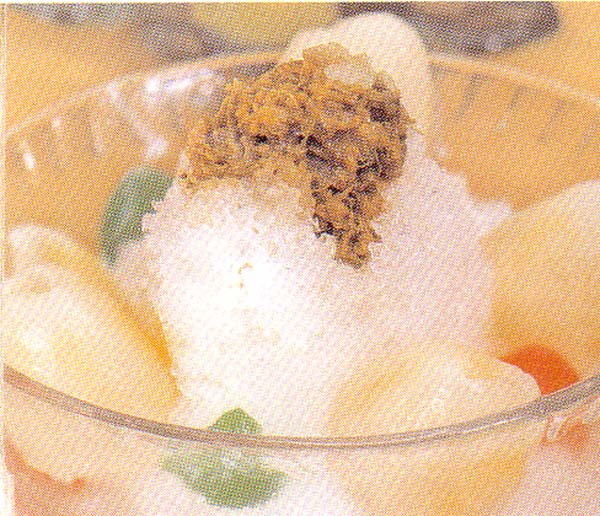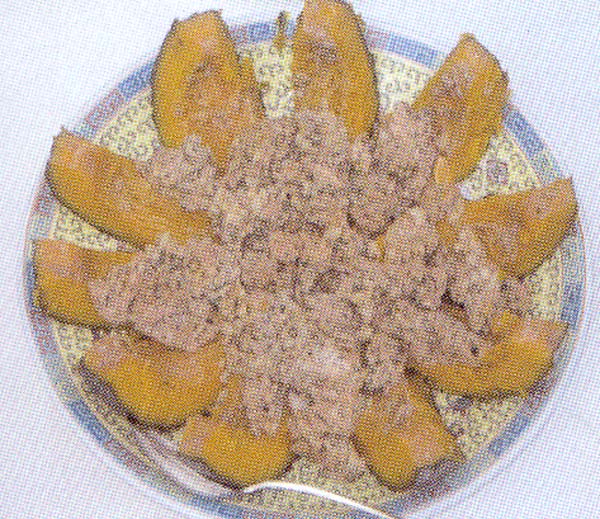
| What is Flavor and Fortune? |
| How do I subscribe? |
| How do I get past issues? |
| How do I advertise? |
| How do I contact the editor? |
Read 13188348 times
Connect me to:
| Home |
| Articles |
| Book reviews |
| Letters to the Editor |
| Newmans News and Notes |
| Recipes |
| Restaurant reviews |
| Article Index (all years, slow) |
| List of Article Years |
| Article Index (2026) |
| Article Index (last 2 years) |
| Things others say |
| Related Links |
| Log In... |
| Authors |
| Categories & Topics |
TOPICS INCLUDE: Thanks for my reviewing my books; Asian statistics; Plane ice; Chinese entertainment; Chinese pumpkin; Red bean congee; Chinese chestnuts; Bought your book
| by Jacqueline M. Newman |
Letters to the Editor
Summer Volume: 2009 Issue: 16(2) page(s): 14 and 15
From CECILIA via snail mail:
We really enjoy your magazine. All your Chinese foods are so familiar and well done! We enjoyed reading the history of dumplings, Song Dynasty food, and about Hunan cuisine. We were surprised to find my cookbooks reviewed on page 34 in Volume 15(3); what a nice thing for you to do. Thank you for writing the review about the book and all the things we did for years. My son Andy was so excited when he saw his picture, he e-mailed it to all his friends. Amy, our daughter is in London, and she was excited, too. She is in the middle of a rewrite of my book and it will be redone for another non-profit organization. Thank you again.
 CECILIA: Thanks for your kind words and for telling us there will be a sixth edition. Please advise when it is published. We wish to purchase a copy and add it to the Jacqueline M. Newman Chinese Cookbook Collection in Stony Brook University's Special Collections area. Then it, too, can be available with your other books, annotated on their website: www.stonybrook.edu and available for all to know and enjoy.
CECILIA: Thanks for your kind words and for telling us there will be a sixth edition. Please advise when it is published. We wish to purchase a copy and add it to the Jacqueline M. Newman Chinese Cookbook Collection in Stony Brook University's Special Collections area. Then it, too, can be available with your other books, annotated on their website: www.stonybrook.edu and available for all to know and enjoy.
From ARETHA via e-mail:
Thanks for those Asian statistics updates. I and many others appreciate them, and hope that you keep them coming. Another question: What are Asians and non-Asians buying? They help spot trends, even help me serve my guests foods that are both 'in' and fashionable.
ARETHA: Bet one trend is beverages. The last Asian food show we attended, almost every person, no matter their ethnicity, had a bottle of water, tea, juice, or an energy drink in hand. Watched many of them put it to their lips and just take a sip. Wonder why they truck them around? Many Asians are buying ethnic foods, some fifty-five percent of them, but what they purchase, we know not. The largest purchasers of Asian specialty foods are in the 25 to 34 year age bracket. Another number note, do you know that worldwide all Asians, as a group, now make up more than sixty percent of the population? That is a lot of purchasing power. It would be more if many of them were not living in or close to the poverty level.
From SCOTT and his BUDDIES via e-mail:
Can you tell us why at one place, we had shaved ice that they called Plane Ice?
 SCOTT and ALL: Bao bing is, when called 'plane ice,' so-named after the carpenter's plane used years ago to make shaved ice. Then and now, the shavings or 'snow' as they are often called, are generously topped with syrups, red beans, squares of soft bean curd, fruit, nuts, and/or evaporated milk. This snack food is, in a few restaurants, served as a dessert. It is very popular in Taiwan and in Chinatown areas in the United States. On our last trip to southern China, we never did see it, but did see a few places serving bubble tea, with mango and litchi ice with or without syrup poured over it. A couple of times we saw a slushie made with ice in a blender.
SCOTT and ALL: Bao bing is, when called 'plane ice,' so-named after the carpenter's plane used years ago to make shaved ice. Then and now, the shavings or 'snow' as they are often called, are generously topped with syrups, red beans, squares of soft bean curd, fruit, nuts, and/or evaporated milk. This snack food is, in a few restaurants, served as a dessert. It is very popular in Taiwan and in Chinatown areas in the United States. On our last trip to southern China, we never did see it, but did see a few places serving bubble tea, with mango and litchi ice with or without syrup poured over it. A couple of times we saw a slushie made with ice in a blender.
From TRICIA via e-mail:
Thanks for the history lesson on the Chinese entertainment industry in the 1930's and 1940's. I happened upon it after finding an old army jacket in a Salvation Army Story here in Grand Junction CO. When I looked through the pockets, I found a napkin from Andy Wong's Skyroom. Went home and googled that and found all this great information from your magazine. Clearly, this service-man never washed nor dry-cleaned his jacket after that night because the napkin was in good shape and the jacket had food stains. Makes me wonder if it was his last good time before being deployed and meeting destiny in WWII. The jacket had a tag with a 1944 date. My hats off to you for helping enquiring minds like mine. Your info was very thorough and did shed light on things I was never aware of, especially the influence of the Chinese at that time in our history.
TRICIA: Letters such as yours show how far-reaching the information we publish can be. Never would have imagined your find, curiosity, and pleasure. Thanks for sharing.
From AYLIN in TURKEY:
It was strange to see our usual local Chinese spots reviewed in your international magazine’s Volume 15(1) on pages 5, 6, and 7. It was informative even for me as there were places I had not checked out; so thanks a lot. The article on Chinese pumpkin in the same issue on pages 12, 24, and 25 looked exactly like a Turkoman dish from a Turkic group originating in Central Asia. One difference, theirs is carved with a spoon, the pieces mixed with meat chunks and chopped onion and filled back into the pumpkin, baked in an oven or buried in hot sand then covered with hot coals.
 AYLIN: We are glad you appreciated the article in your home country and do hope you get to eat at all the Chinese restaurants mentioned therein. Glad, as well, that you enjoyed the article about the Chinese pumpkin. It is a small culinary world with food connections country to country. Clearly pumpkin traversed the Silk Road, an indicator of where and how this one food traveled about in your region of the world. There are others; and that is what makes studying foods, eating them, and enjoying them an adventure and a pleasure.
AYLIN: We are glad you appreciated the article in your home country and do hope you get to eat at all the Chinese restaurants mentioned therein. Glad, as well, that you enjoyed the article about the Chinese pumpkin. It is a small culinary world with food connections country to country. Clearly pumpkin traversed the Silk Road, an indicator of where and how this one food traveled about in your region of the world. There are others; and that is what makes studying foods, eating them, and enjoying them an adventure and a pleasure.
From DIEDRA via e-mail:
A friend gave me a recipe for red bean congee, but it had no red beans, just mung beans, chicken, and red rice. She said it helped build blood, reduce stomach aches, and that it was a diuretic. We both ask, how can one recipe do so many things? And, why no red beans?
DIEDRA: As you did ask this friend to no avail, we spent some hours searching recipes and did find a recipe that aids the three things listed. The traditional medical practitioners we spoke to said that body parts are interconnected and that is why most Chinese recipes aid many conditions. They indicated relationships exist between these parts due to meridian or other connections. Incidentally, we were able to locate a recipe that does those three things and has red beans in it, as well; it is at the end of this set of letters.
From VALERIE via e-mail:
Two questions: 1) Could you publish the quantities omitted in the Pureed Pecans with Chestnuts and the Chinese White Cake (pages 26 and 30; and 2) A correction for the Chinese Chestnut article (page 32 where you speak of the chestnut blight killing off all thousands of trees in Europe.
VALERIE:
Thanks for calling attention to ingredient amounts printed with question marks. Page 26 should have said 1 cup and 2 Tablespoons sugar; page 30 (not page 32 as you indicated) should have said 1 cup flour and 1 teaspoon baking powder. And, as to the chestnut blight, I was neither clear nor complete. The Chinese chestnut botanically known as C. mollissima is resistant to the blight that killed virtually all chestnut trees in America; and that was circa 1904. Thousands of European chestnut trees, their botanical name C. sativa, were also killed, but seventy five to eighty-five years later. The Swiss, I believe, found a virus that destroys/kills this canker blight. Though thousands of trees in Europe were lost, many were saved treating them with this virus. Thus the total European chestnut industry (wood and nuts) was spared. Newer trees planted there and in the United States are crossed with the blight-resistant Chinese chestnut. Virtually all chestnuts in America now come from Europe, ninety-nine percent from Italy.
From PHYLLIS via snail mail:
I adore Chinese foods and the recipes in Flavor and Fortune have always provided my family with a world of adventurous cuisine. My family especially enjoyed Sliced Chicken with Fruit, Beef Cakes with Watercress, Crispy Sweet and Sour Beef, and Fish Ball Casserole. I also recently purchased your book, Cooking form China’s Fujian Province; got it straight from the publisher. Having a few cookbooks as excellent as yours, the 1,000 Recipe Chinese Cookbook by Gloria Bley Miller (which was my introduction to Chinese cookery many years ago) and issues of Flavor and Fortune means my family travels to exciting and exotic places all within the perfumed contents of a wok.
PHYLLIS: What a lovely way to start the Year of the Ox finding your letter on the top of the pile. Thanks for your kind words and for telling us those recipes you particularly enjoyed making and consuming. Here's to savory and super happy eating this year and all the ones to follow!
From DAVA with her renewal:
Look forward to each issue of Flavor and Fortune to learn more about Chinese cuisine–fascinating! Thank you so much.
DAVA and OTHERS, too: Do appreciate all your kind words. You are why we strive hard to keep the information accurate, valuable, even special. May you, and all who write (and those who mean to) continue to enjoy.
| Red Congee |
|---|
5 Tablespoons red beans, soaked for three hours, then drained 2 Tablespoons red rice 3 pieces (about half a tangerine) dried tangerine peel 2 Tablespoons mung beans 3 cups leftover chicken congee with pidan (see Volume 9(1) pp 10) or any white rice congee 3 Tablespoons granulated sugar 1 teaspoon salt Preparation: 1. Check beans and discard any broken ones, then put them in a bowl with the red rice and six cups of cold water. Allow these to soak overnight. 2. Drain and discard the water, put the beans and rice and the tangerine peel and the mung beans in a pot with six cups of cold water, and bring to the boil, reduce the heat, and simmer covered for three hours. 3. Discard the tangerine peel, and add the congee, and stir well. Bring almost to the boil, reduce the heat, add the sugar and the salt and simmer uncovered stirring often for one hour; then serve. |

Copyright © 1994-2026 by ISACC, all rights reserved
Address
3 Jefferson Ferry Drive
S. Setauket NY 11720